Things to do in Brno, Czechia
Brno, Czechia’s second largest city, was a wonderful surprise. Little did we know when we booked a few nights in this fabulous little city, just how much fun we were going to have.
The main purpose of our visit was to break up our journey between Vienna and Prague. The train journey between the two actually wasn’t that arduous, but we thought that since we were passing through, we’d see what what on offer.
Our flying visit very quickly turned into one of the travel highlights of our entire year. What we found, to our complete surprise, was a lively, progressive, youth-oriented city that was trying hard and succeeding to be a brilliant city break destination. With so many attractions, excellent cafes, bars and restaurants and a full programme of events held throughout the year, Brno could very well be travel’s next big thing.
In this post, we’re going to present to you just some of reasons why we think you should visit Czechia’s quirky second city.
Things to do in Brno, Czechia
Discover great things to see in do in Brno with GetYourGuide.
Things We Love About Brno
For a small city, Brno is packed full of great things to see and do. From ornate, roman catholic churches to modern, welcoming bars and restaurants, Brno is a perfect city break destination.
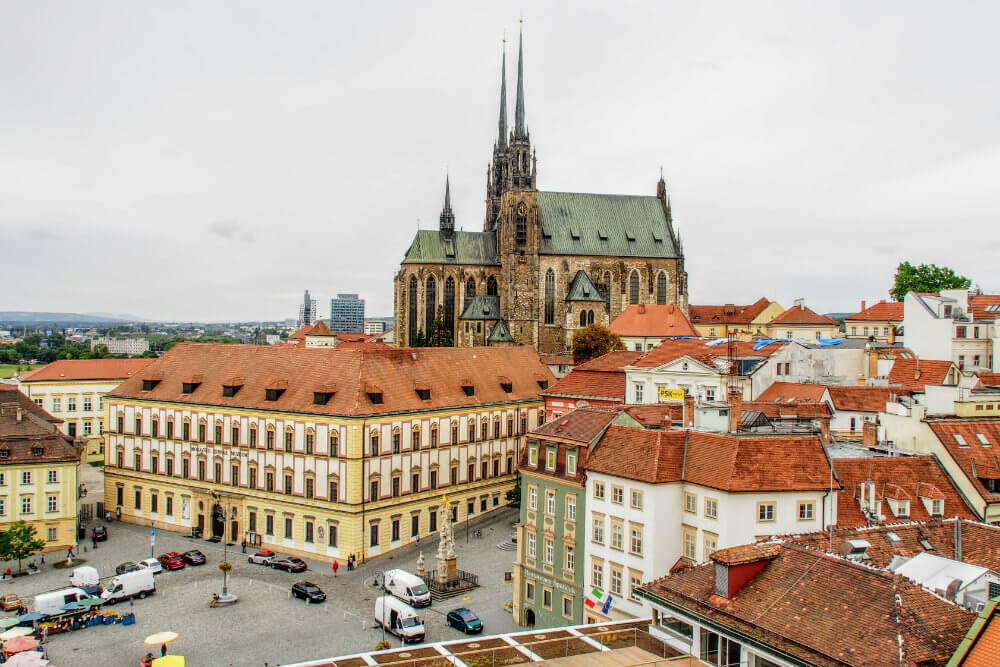

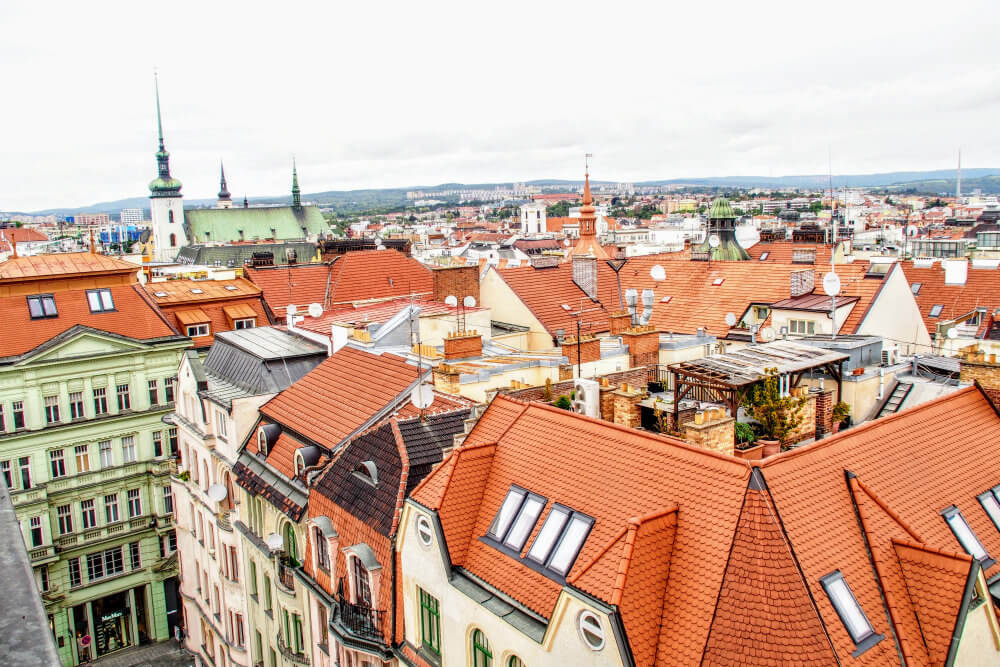
1. The Views From the Old Town Hall Observation Tower
Address: Radnická 8, 602 00 Brno-střed, Czechia
Visit Website | Save to Google Maps | Save to Tripadvisor*
We always like to start a visit to somewhere new by climbing an observation tower to get a lay of the land. We didn't exclude Brno from this rule.
The 63-metre high Old Town Hall (Stará radnice) offers some great panoramic views of the city below, including many of Brno's top attractions. You could almost plan out your entire itinerary from this one spot! Entry is a nominal 70Kč (multiple concessions, 50% discount with a Brnopas) and allows access to a gallery, exhibition and historic halls.
As you enter, look out for a preserved crocodile hanging from the ceiling. Legend has it this "dragon" once terrorised the city. By the looks of it now, its reign of terror is well and truly over.

2. Brno's Quirky Astronomical Clock
Address: nám. Svobody, 602 00 Brno-střed, Czechia
Save to Google Maps | Save to Tripadvisor*
If anything captures the quirky nature of Brno best, it's this astronomical clock (Brněnský orloj). The controversial monument, made of black marble, took three years to build at the cost of 12 million Czech crowns.
Firstly, let's get it out of the way. Yes, the shape is a bit phallic, isn't it. It's actually supposed to resemble a bullet, but you can draw your own conclusions as to whether or not the brief was met.
Curiously, despite its name, it's not an astronomical clock at all. It's just a clock. It was built to commemorate a famous and unlikely victory the citizens of Brno had over invading Swedes in 1645 as part of the Thirty Years' War. After three months of failed sieges, a Swedish general decided to give in if the city hadn't fallen by noon that day. Faced with this ultimatum, the citizens of Brno put the town clock forward an hour at 11am, so that it read noon. Sure enough, the Swedes retreated.
Now, at 11am each morning, a glass marble is released from the clock from one of four openings. Whoever catches it gets to keep it as a souvenir.
Also, rather wonderfully, the cathedral bells still chime 12 times at 11'o'clock, in a nod to the city's resilience and creative thinking.
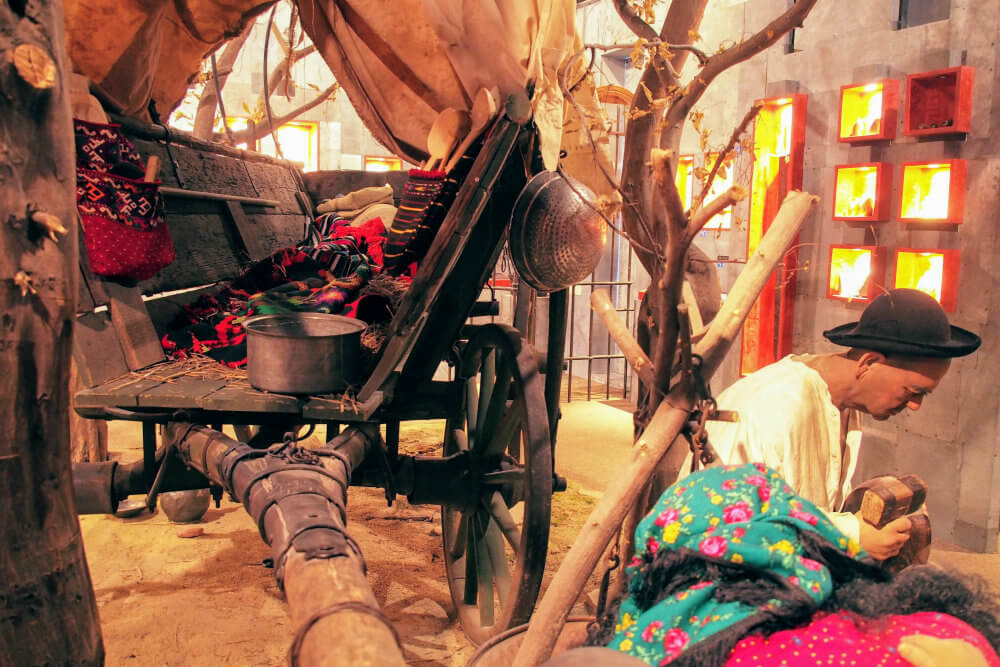
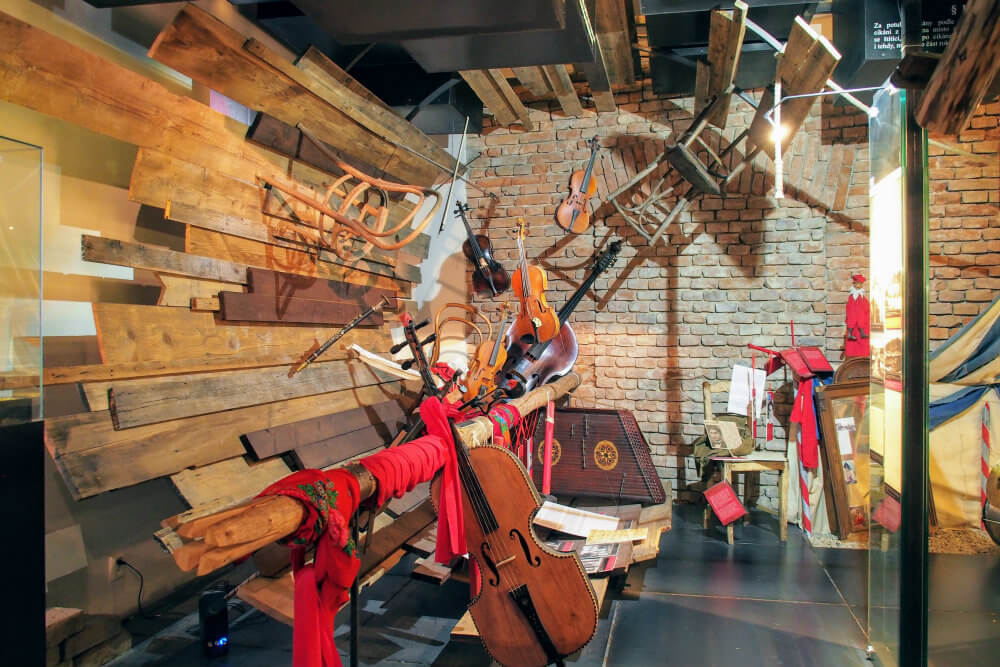
3. The Brilliant Museum of Romani Culture
Address: 67, Bratislavská 246, Zábrdovice, 602 00 Brno-střed, Czechia
Visit Website | Save to Google Maps | Save to Tripadvisor*
The Romani community have been much maligned throughout their entire existence, and particularly since their initial migration from India. Their story is told in compelling detail at the Museum of Romani Culture, a short walk from the city centre.
The permanent displays are absorbing and engaging and tells of a misunderstood community that has faced persistent persecution. There are over 25 thousand objects, displayed creatively across several rooms. While most of the exhibition tells the full story of the Romani struggle, there are also displays celebrating Romani art and craftsmanship. The experience is supported by the use of an immersive audio guide.
As well as the museum, the building plays host to lectures, concerts, a range of events and temporary exhibits and academic research. It's fabulous that such a building exists, where it can serve the needs of locals, but also reach out to those unfamiliar with the community's history and social contributions.
Entry to the museum is 80Kč or free with a Brnopas. We totally recommend it!
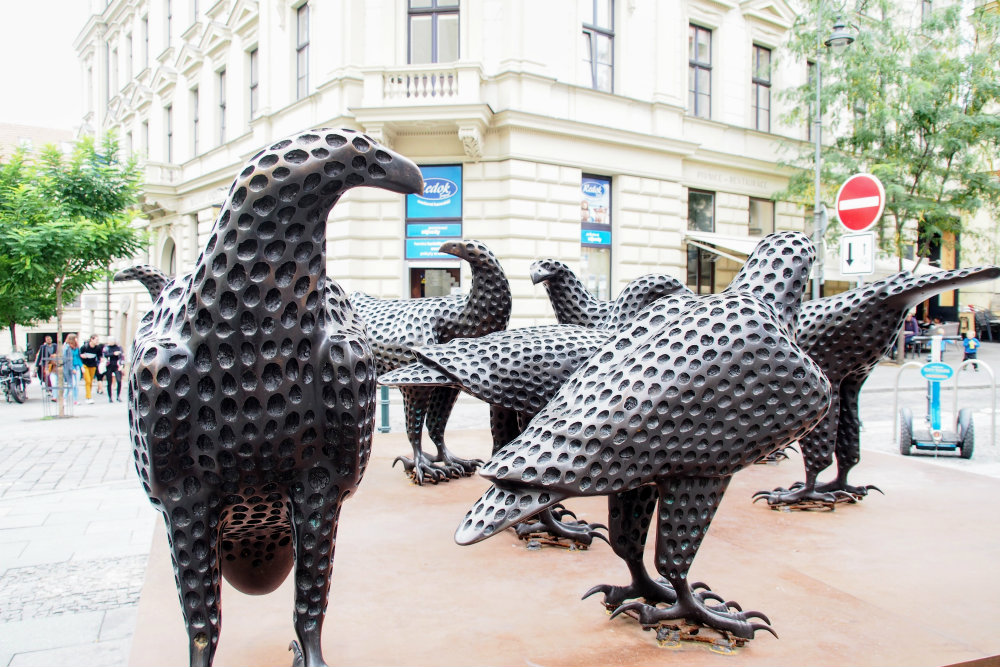
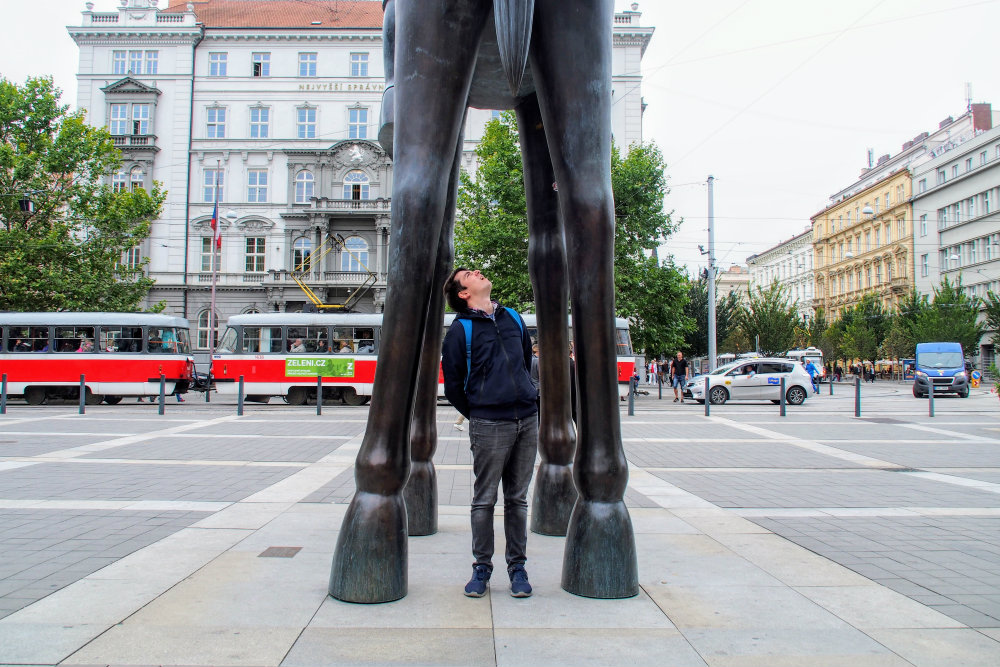
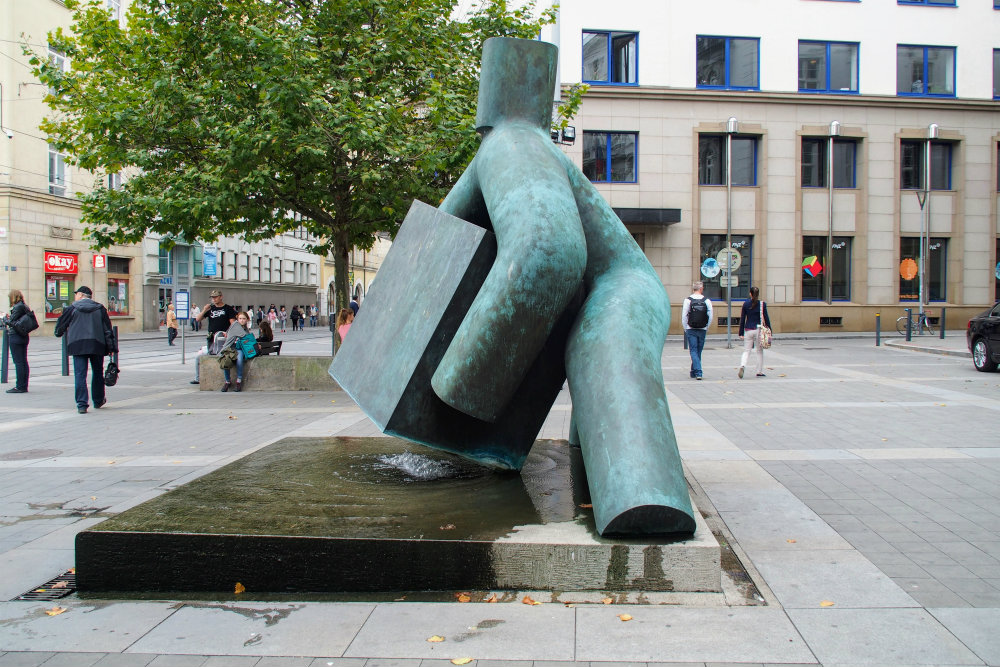
4. A Dedication to the Installation of Public Art
Spend an hour or two in Brno and you'll start to notice you're not alone.
The city centre is graced by the presence of several statues & sculptures, each offering an intimate, and sometimes controversial or even confusing insight into the city's personality.
Take for example Courage (Odvaha) by Jaroslav Róna on Moravian Square (Moravské náměstí) which depicts a knight mounting a horse with unusually long legs. From afar, the length of the legs is noticeable, but the sizable limbs actually isn't why this piece prompts conversations. Stand underneath the statue and glance skywards and you'll discover a saucy surprise.
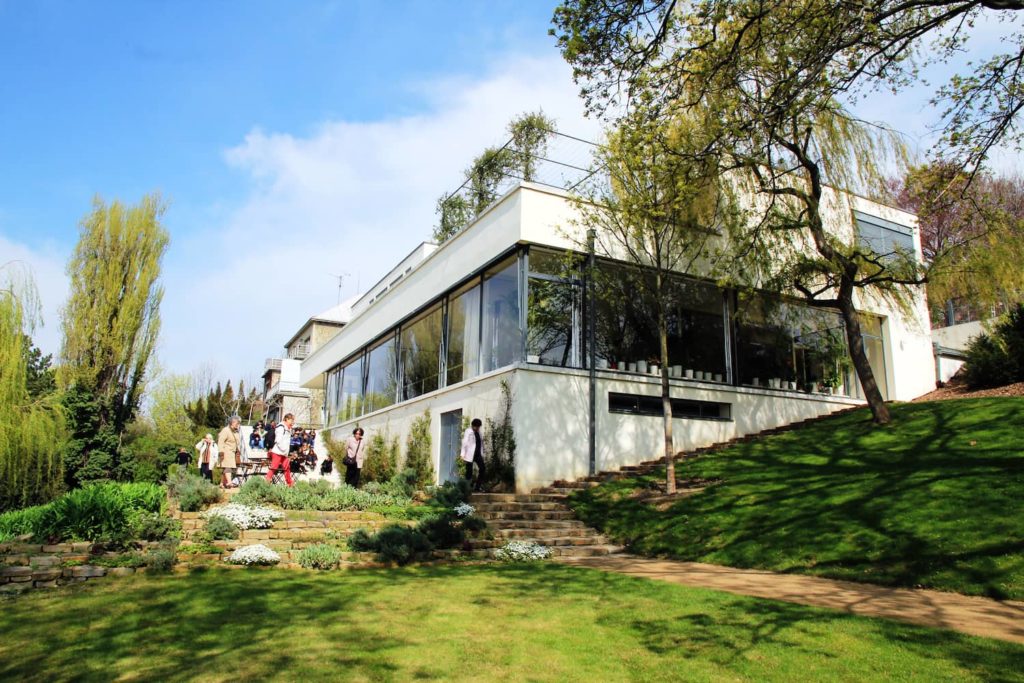
5. The birthplace of Czechia and Slovakia is a modernist marvel
This UNESCO World Heritage site is one of the first examples of modern architecture in Europe. Built between 1928 and 1930, it was designed with a pioneering 'less is more' principle.
The architectural significance aside, the villa is also the site where leaders from the former Czechoslovakia came together to sign declarations that split the country into two and created modern day Czechia and Slovakia.
There are a variety of tickets on offer - if you're just interested in seeing the building from the outside, you can buy a 'garden and exposition' ticket, whereas if you want to get inside, you'll need to book into a guided tour. Head to the official website to see the options and to book.
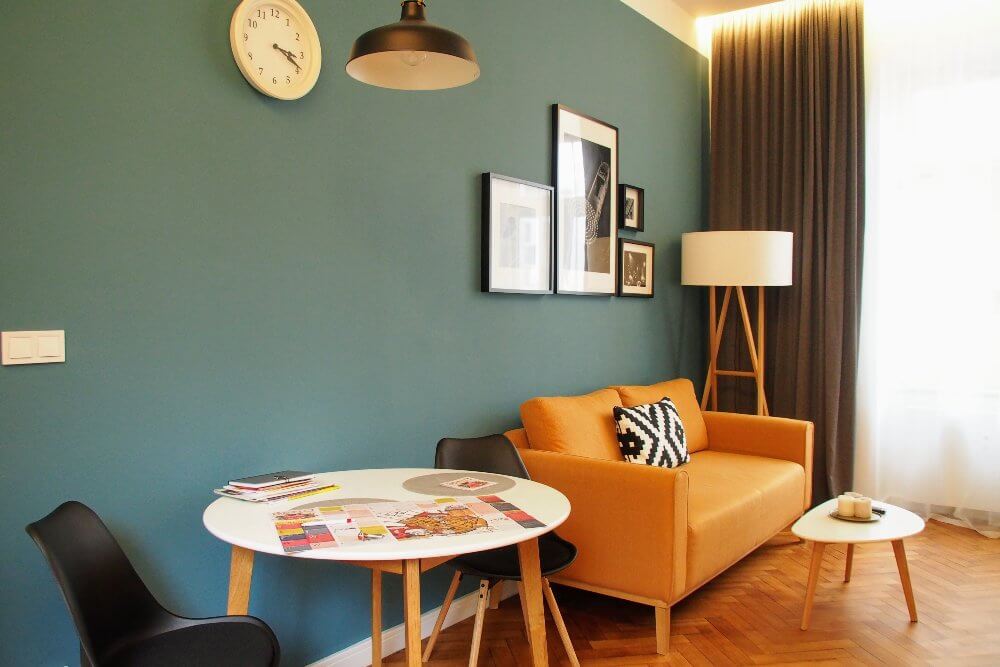

6. Lots of great value accommodation to choose from
Since Brno isn't yet the tourist hotspot it deserves to be, hotel prices are still very competitive. This means finding cheap deals on high quality accommodation is normally very easy (scroll down to the Plan & Book section to see our hotel picks).
As well as hotels, there are lots of homes and apartments to choose from too. We chose a petite, but fully-functional apartment* about five minutes walk from the city’s attractions. We really liked the modern decor and colour scheme and the contemporary layout and design choices. Despite the size, there was a complete kitchen, full-sized bed, bright & clean bathroom and comfortable living area.
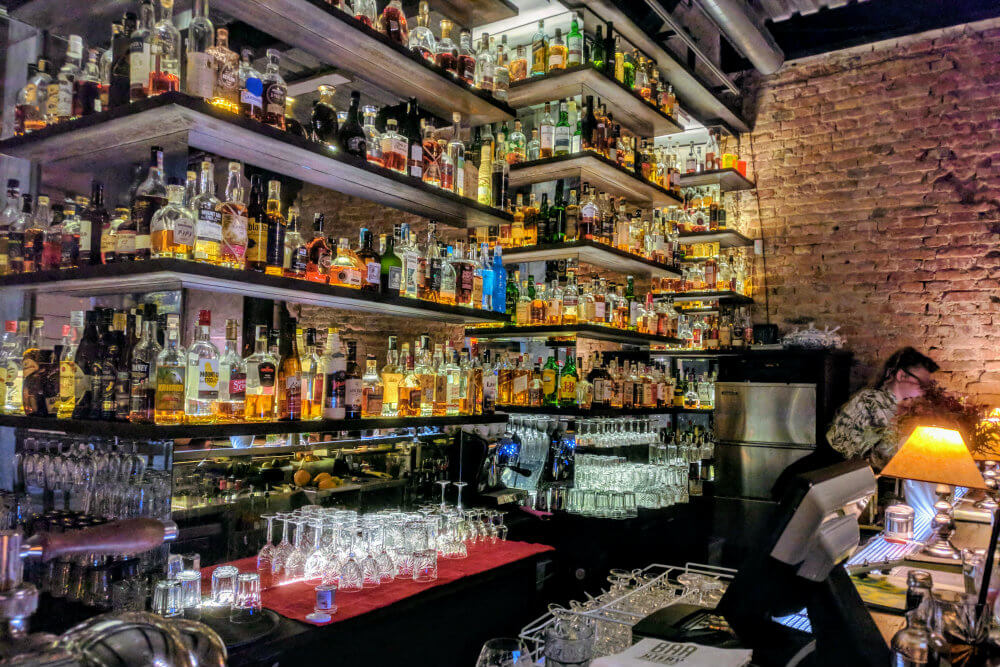
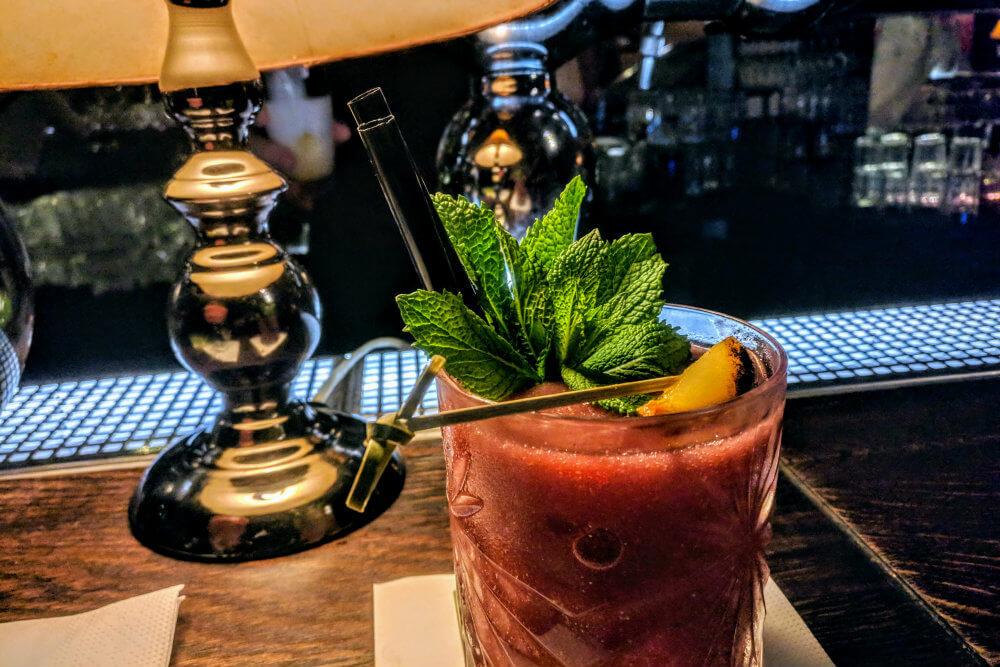
7. The Awesome Night Life
Brno is a university town with a large student population (nearly 90,000), so there are plenty of great places to go for a night out. While it’s perhaps not up there with the likes of Ibiza and Ayia Napa, Brno does have more than its fair share of pubs and trendy cocktail bars.
Neither Jade nor I are particularly used to going out at night, but even we were lured by Brno’s nighttime offerings.
We visited two bars, both contemporary, filled with cool, young people and both doing things their own way. 4rooms (4pokoje) was welcoming and unpretentious, serving bespoke cocktails and an ever changing menu of food, whilst the Bar That Does Not Exist served very reasonably priced classic cocktails in a modern speakeasy setting.
Find out more: Read about 4rooms and the Bar That Does Not Exist in our post on the best Veggie-Friendly Cafes, Bars & Restaurants in Brno.
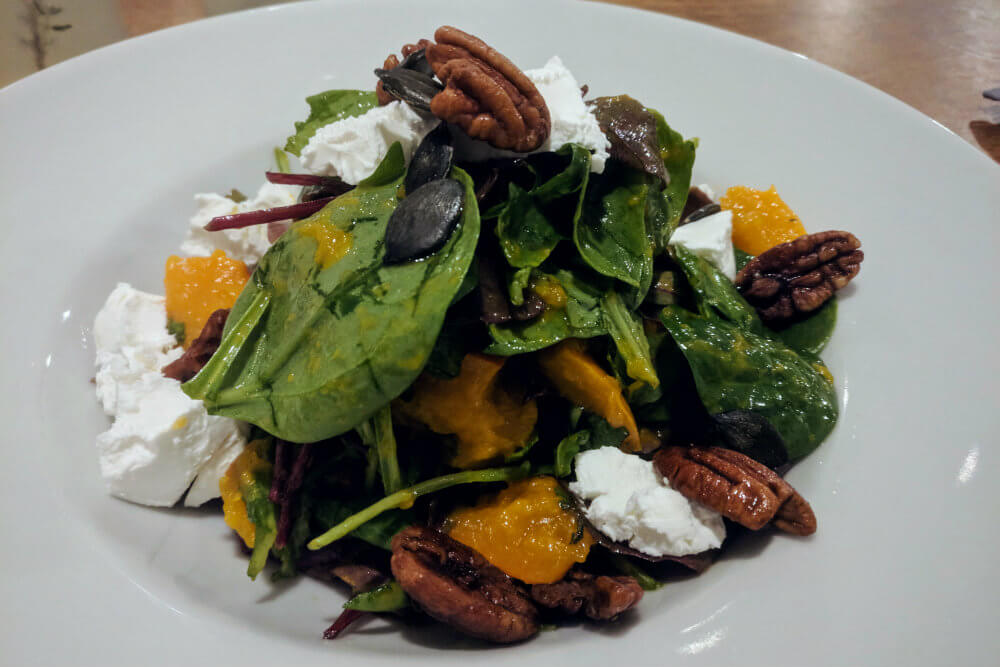
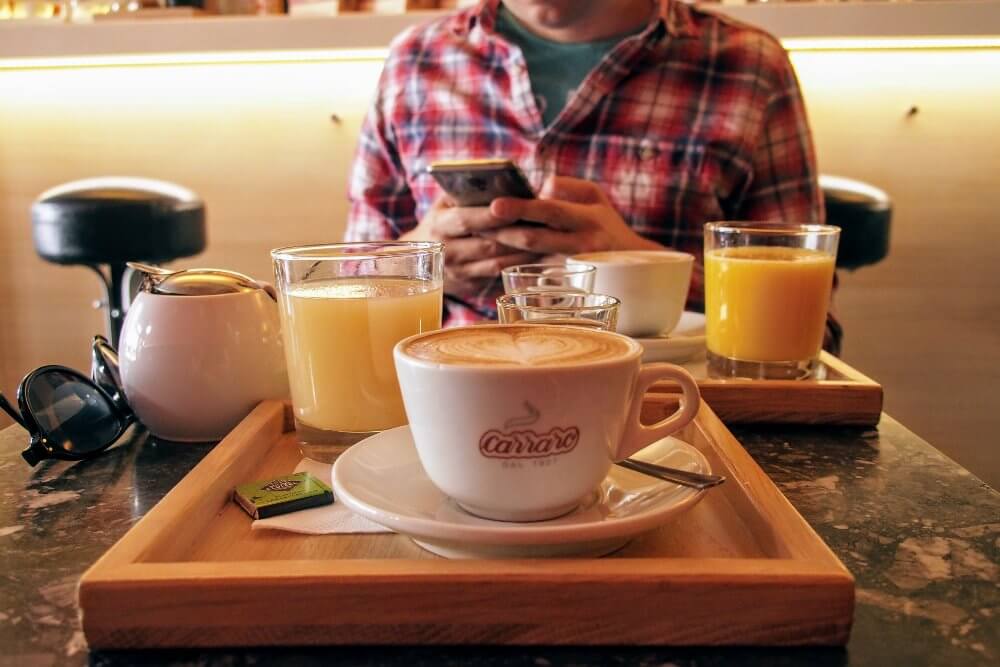
8. A Plethora of Cool Cafes and Restaurants
Brno is home to several hipster coffee shops and veggie & vegan friendly bistros serving food that defy the Czech/Eastern European cuisine stereotypes. While you can of course find more traditional places that stick to serving meat and veg staples, they are also easily avoided in favour of more modern eateries.
Our favourite cafe was Skøg Urban Hub, a space filled with young hipsters drinking artisan coffees whilst working on their Macbooks. Our favourite restaurant was Soul Bistro, serving thoughtful, tasty goodness amidst minimalist decor.
Find out more: You can read more about these and other cafes and restaurants we visited in our guide to the best Veggie-Friendly Cafes, Bars & Restaurants in Brno.
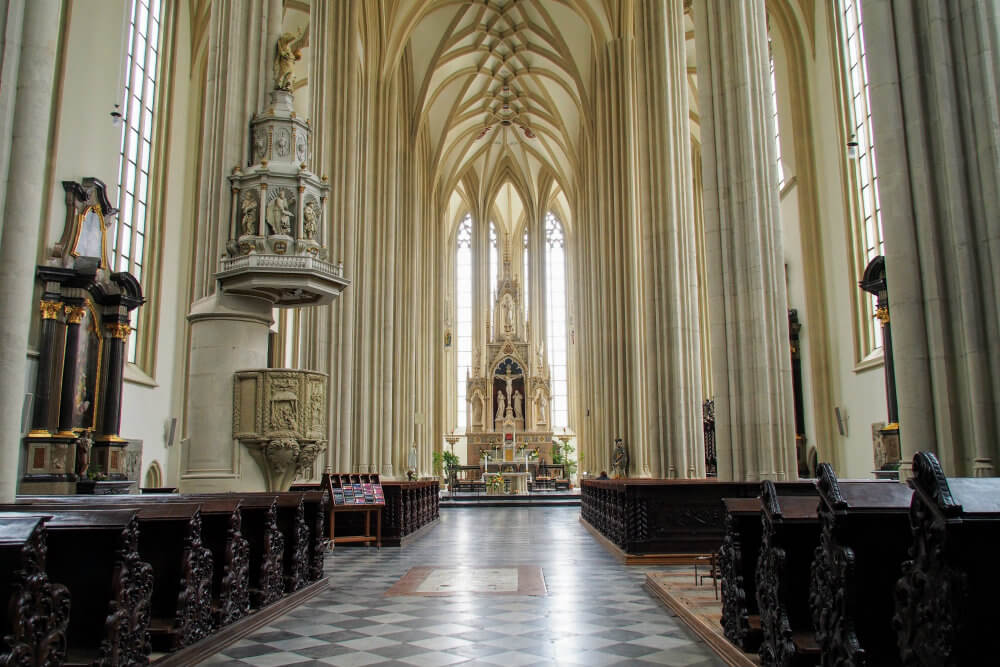
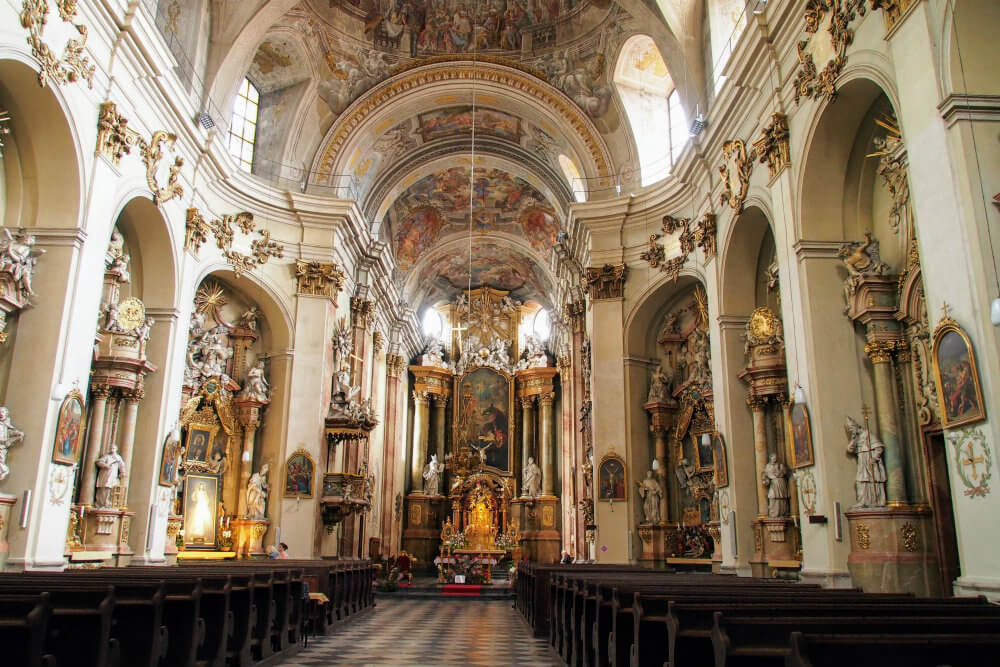
9. Lots of Fabulous Churches to Visit
Brno has several fabulously decorative Roman Catholic churches to visit and entry to most is free of charge.
While the churches themselves are wonderful in their own right, there are a couple of hidden surprises in store for those keen to explore a little further.
Underneath the baroque Church of St James is Europe’s second largest ossurary, where it is thought 50,000 people were once buried. Today, the remaining bones have been arranged in a curiously artistic way. Combined with careful lighting and music specially arranged to accompany the display, the Ossuary at the Church of St James is not to be missed.
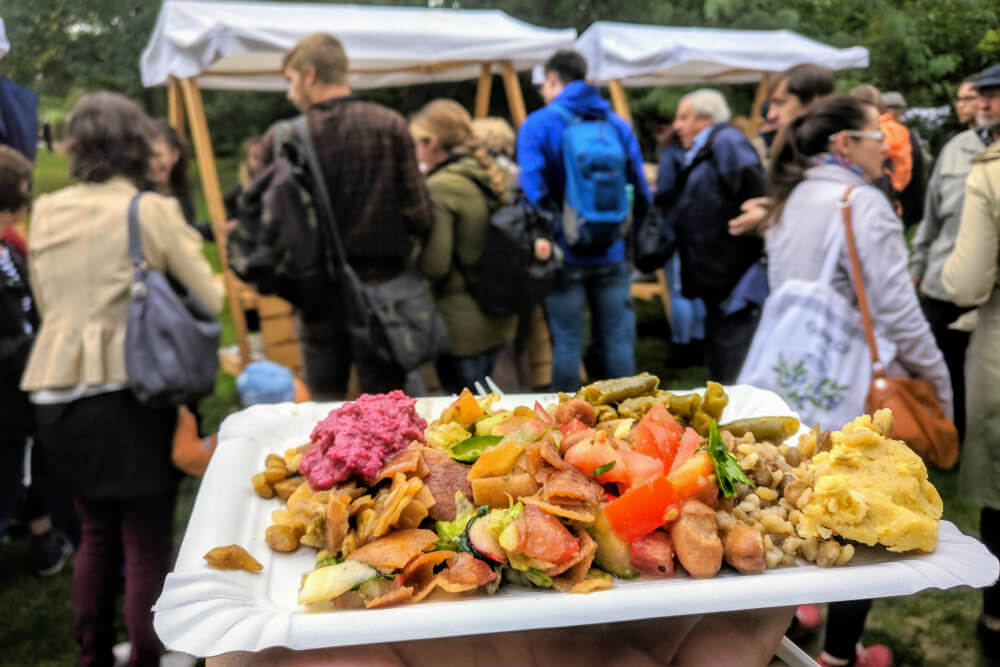
10. There’s always something interesting going On
During our short visit, we were surprised by the high number of events taking place. Across the city, all available space was seemingly being used for visiting or temporary exhibitions whilst local authority/community groups were holding events celebrating and highlighting different aspects of Brno’s populace.
We tried our best to frequent as many of these events as we could, visiting art galleries and museums and dropping by a World Music event in one of the city’s parks where, as well as being entertained by a variety of music, were fed a platter of vegetarian food completely free.
The main square, Freedom Square (náměstí Svobody), is often home to events that are easy to take part in. During our trip, a food and wine festival was being held. The official Brno Tourism website has a calendar of events on, so check it before your visit.

11. The Christmas Lights Stay Up All Year Round
We’re not sure whether the lights hung over the streets of Brno are actually Christmas lights that are left out all year. Whatever their purpose, they certainly make evening’s in Brno a little more vibrant and festive.
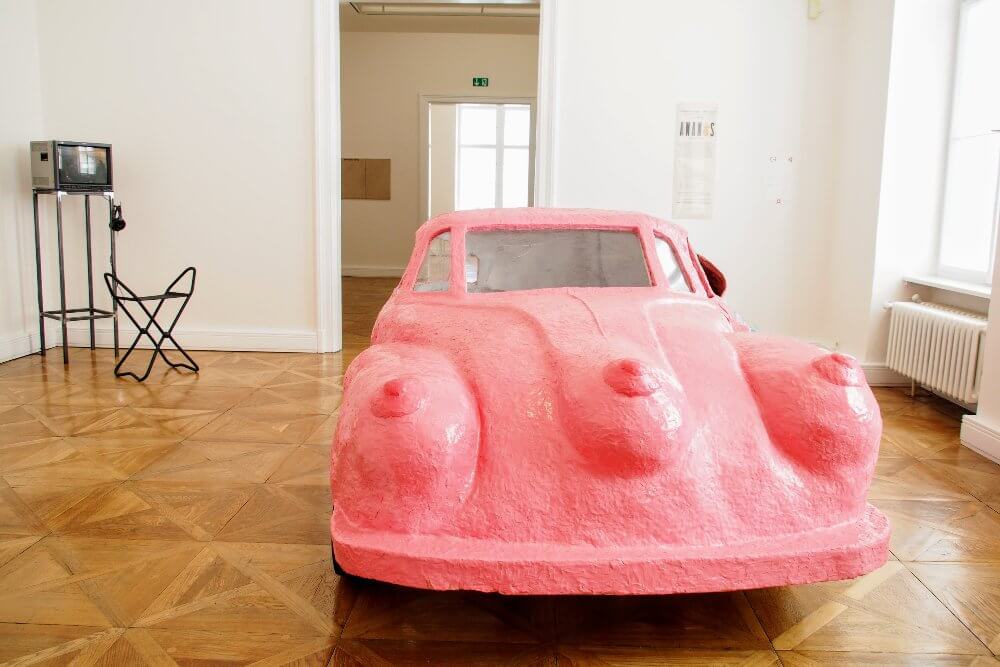
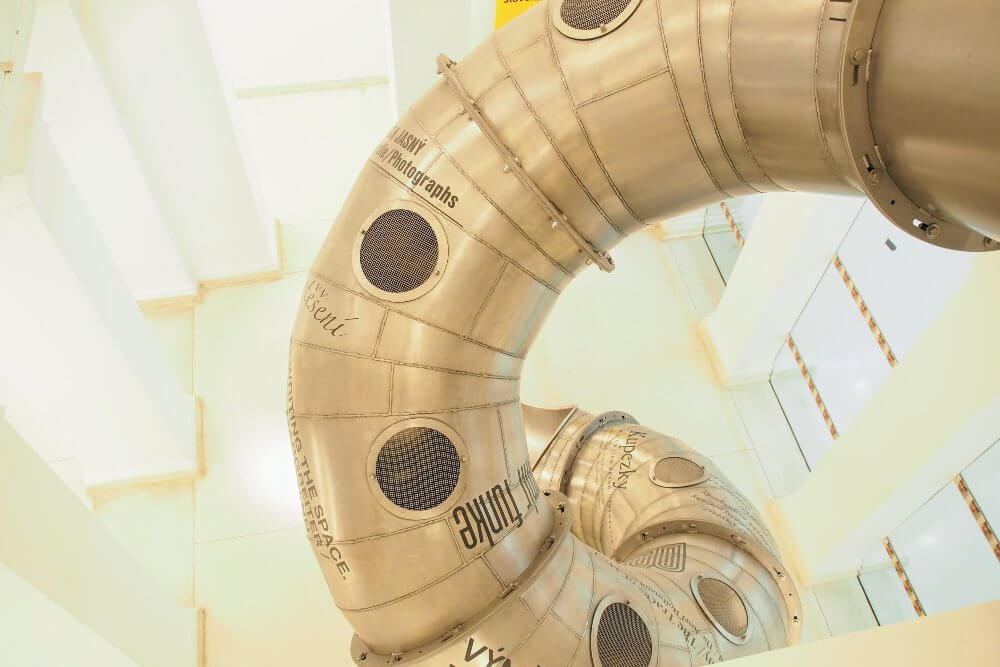
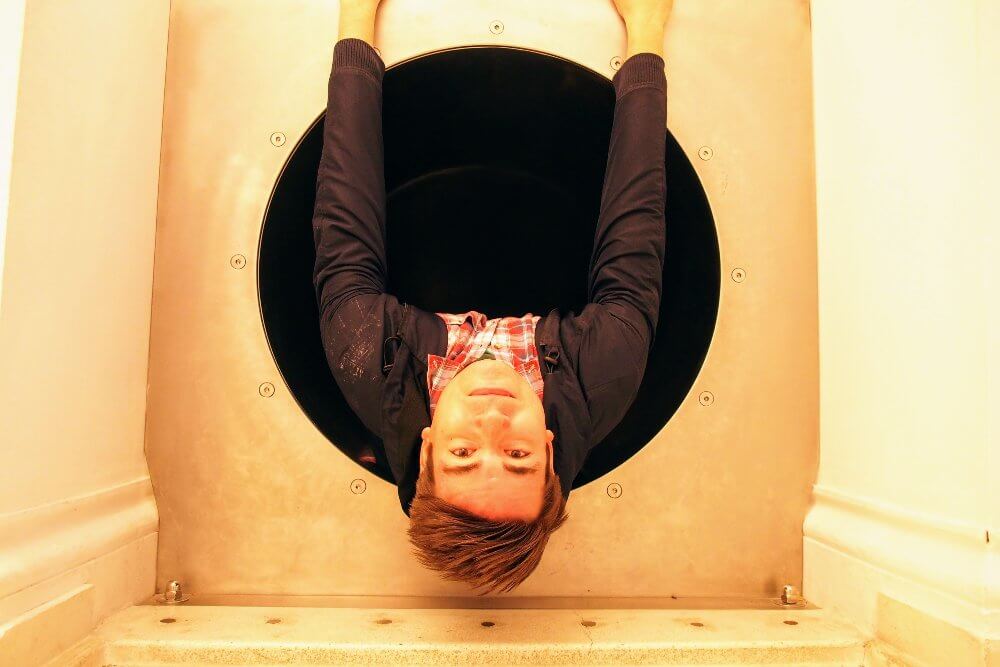
12. The Excellent Art Galleries & Museums
I'm not massively into galleries and museums, but even I was impressed by Brno's range of thirteen cultural institutions.
Since we were only in town for a couple of days, we could only make it to parts of the Moravian Gallery (Czechia's second largest art museum), which is split across four sites. Pražák Palace, considered the main building, and is home to temporary and permanent collections of art spanning several different categories and genres. It is also home to a spiral slide which patrons are encouraged to make good use of.
We also popped across the road to the Museum of Applied Arts, which at the time was hosting an interactive exhibition on nineties pop culture. Rows of functioning video game machines sat alongside sets of roller boots on pedestals. It was pretty cool. This grand building is set to close until 2020, whilst it receives so much needed renovation work.
Admission fees vary, with some buildings offering free entry, and others charging nominal fees. Some institutions, like the Moravian Gallery, offer a long series of possible discounts (including half price entry if you show in Ikea Family Card of all things), so do make sure you have a look through the list before you pay full price.
Plan & Book your visit to Brno
In this section, we’ll go through how you can plan and book your visit to Brno.
Trains to Brno
Brno railway station (normally referred to as Brno hl.n.) is on a major international railway line with direct connections to places in Czechia and further afield. If you're travelling from Budapest, Bratislava and Vienna, the train will be the best option for you.
Travelling by train from Prague to Brno
Prague, the Czech capital, is a direct 2.5 hour train ride away from Brno, therefore flying into Prague and catching a train to Brno is a great option and might also end up being better value.
Both Czech Railways (České dráhy or ČD) and the Austrian-Czech high-speed service, Railjet run services between the cities. Standard fares are very cheap and upgrades are surprisingly not much more, so do consider upgrading, particular on the much more lavish Railjet services.
Booking your train tickets in advance not only brings peace of mind, it also often means you pay the lowest fare. To find the best value train tickets to Brno from anywhere, we recommend Trainline*.
Since trains produce significantly less CO2 than planes, taking the train is a Responsible Travel Choice.
Flights to Brno
Brno has its own international airport and has year-round incoming flights to/from London and Munich. There are also seasonal flights to/from several destinations around the Mediterranean Sea.
Skyscanner* is a great place to start your search for the best prices on flights to Brno. They compare fares from multiple airlines and travel agents all at once.
Transfers from the airport
Bus E76 (N89 at night) will take you from outside the departure terminal into the city centre in just 20 minutes. Tickets (25 CSK) can be purchased from a vending machine in arrivals or from the driver using cash or contactless cards.
Buses to Brno
If you're travelling on a budget and your origin is fairly local, travelling to Brno by bus is a great option. The journey from Vienna is particular competitive with journey times at only 90 minutes.
If you're travelling from Poland, there are lots of bus services offering seats at practically unbeatable prices. Journey times though are pretty lengthy.
Search and compare bus fares with Busbud*, which offers comprehensive and up-to-date timetable and ticket price information for destinations all over the world.
Brno, the second city in the Czech Republic, is known for its unique architecture.
It prides itself on its rich heritage of modernist architecture, with its minimalist elegance.
I spent the better part of my 3-week visit to Brno looking up. There seems to be an interesting building just about everywhere you look.
This post isn’t just for architecture buffs though. There are stories behind the buildings and you can learn so much about the city and its people, history and culture from how its houses are designed.
“Architecture? Same as literature, if you ask me. What you need is a good plot, interesting characters, unique language.”
Jaroslav Rudiš, writer
Architecture and interior design are among the things that draw tourists to Brno.
Its main highlight is the beautiful Villa Tugendhat, one of four famous historic villas that are currently open to the public in Brno.
All of them are ever so stylish and when they were built they were ahead of their time, almost futuristic.
Before I booked my trip to Brno, I had read about the four villas and was intrigued.
Later I discovered that the city had many other architectural gems and unique buildings to explore.
It also has some great design and architecture festivals to attend and some interesting galleries for design and contemporary art lovers.
Read on to find out details about all of these. I’ve also included some tips at the end of the post on how to plan a trip to Brno.
The Four Villas In Brno
Brno’s major architectural highlights are its four famous villas.
Each has it own unique style and they’re all open to the public.
Villa Tugendhat – The Most Famous Modernist Building In Brno

This beautiful minimalist house is the most famous attraction in Brno.
You can visit the villa by joining a guided tour (which you want to book a couple of months in advance, they sell out quickly).
I joined an English language tour with a small group of visitors and a knowledgeable guide.
She took us from the upstairs terrace into the entrance hall, the bedrooms and the massive living room.
The living space is the most stunning part of the villa, with huge windows overlooking the garden and the city of Brno, a library, a piano and the modernist furniture designed especially for the villa.

We also saw other impressive rooms, especially the huge kitchen and the heating system in the basement (that still works today, almost 100 years later).
Villa Tugendhat dates back to 1930. The Tugendhats, a wealthy couple, commissioned architect Ludwig Mies van der Rohe to design their family home.
He had plenty of artistic freedom and no financial limits… so he used the opportunity to create a masterpiece, that influenced many architects and designers of that era.
People come to see Villa Tugendhat from all over the world. It’s a UNESCO World Heritage Site.
The history of the house is fascinating in itself.
The Tugendhats lived there with their children for less than a decade, and then had to escape and leave the house behind.
They were a Jewish family who had heard about the rise of the Nazis in Germany and anticipated their invasion. They fled just in time and were saved.
The villa was quickly confiscated by the Nazis and suffered a lot of destruction during the war.
In 2012, after a thorough restoration, Villa Tugendhat was opened to the public and it is now a world-famous attraction.
Villa Stiassni – Modernist Or Classicist?

This villa is another stunning house in Brno that you want to visit with a guide.
Both the house and the garden are strikingly beautiful.
It was a residential house where the Stiassni family lived with their only child. It was designed by architect Ernst Wiesner.
From the outside, you’ll see an L-shaped building with the muted tones and clean lines typical of many minimalist buildings in Brno.

There are some hints of decorations on the outside, but nothing to prepare you for what you’ll see when you walk inside…
When we entered, all signs of modernism, simplicity or minimalism disappeared.
The interior simply looks like a classic chateaux.
Each room was meticulously designed and decorated to show off the family’s wealth.
Some original furniture and artworks survived, while others are replicas.
The downstairs area was used for entertaining guests. You can visit the dining room, the large drawing room, the study and business meeting room.


Alfred Stiassni was a textile manufacturer, and in his business room you can see his preserved catalogue with material samples, a bookcase and vintage typing machine.
Hermine Stiassni was a painter and you can see some of her original paintings of the house.
It will give you an idea of what the house looked like at the time when the family lived in it.

She had her own room for entertaining guests with purple walls and wooden furniture.
After seeing the downstairs area, we went upstairs, to see the private family rooms.
The house is simply massive and it’s incredible to think that only three people lived in it.
Each member of the family had their own bedroom, bathroom and dressing room. The child had an extra room as well.
My guide mentioned some interesting details about the symmetry in the design of the ladies wardrobe and the kid’s nursery.
From there, we went out onto the balcony from for a gorgeous view of the city and the gardens around the villa.
We went downstairs again to see the staff quarters. Not much has survived in that part of the villa, but you’ll see that the interior design is much more basic.
What used to be the kitchen is now a gallery with temporary exhibitions changing every season.
We finished the tour in the massive gardens surrounding the villa.
The Story Of Villa Stiassni
As with two of the other famous villas in Brno, the family had to leave the house behind as they escaped from the Nazis.
They only got to enjoy their beautiful house for less than a decade.
The Stiassni family escaped to England and later moved to Hollywood, California.
The villa was used by the Nazis as a casino and later the Russian army stripped the house of its valuables.
It was late rused by the government to host important guests, such as Fidel Castro and Egyptian president Nasser.
Opened to the public in 2014, after its renovation, it’s now one of the best things to see when you visit Brno.
Address: Hroznová 14, 603 00 Brno-střed, Czechia
Villa Löw-Beer – Art Nouveau Luxury
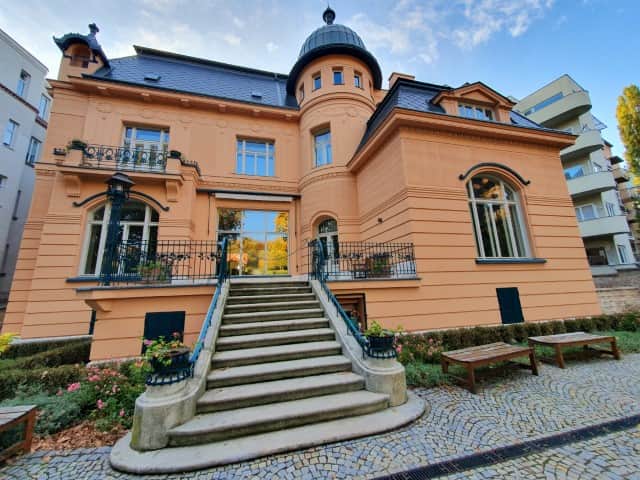
This early 20th century villa isn’t a typical historical house. Don’t expect to see how people used to live in the villa.
Rather, it’s a perfect place to learn about the city of Brno and its people, through the story of this special house.
As you enter, go up the decorated staircase and you’ll already know this was the house of wealthy people.
It was originally built by architect Alexander Neumann for textile entrepreneur Moritz Fuhrmann.
After his death, the house was sold to the Löw-Beers, a wealthy Jewish family who made their fortune in the textile industry.
We first entered the main hall, a huge space with lovely decorations.
The skylight is very impressive and let in plenty of natural light.

Follow the arrows from there to go to the exhibition rooms.
During the Nazi occupation, this beautiful house was used as the Gestapo headquarters, while the family fled to Britain.
This is why there are no restored versions of the rooms the family used to live in or replicas of the original furnishings; not much has survived.
However, there is one room upstairs with typical turn of the century furniture.
It lets you imagine what a room in the villa might have looked like.

The daughter of the Löw-Beer family, Grete, built another house next door, in a very different style to this villa.
That is Villa Tugendhat, and when you visit it, you’ll easily see the contrast in styles.
Large parts of the exhibition in Löw-Beer Villa are dedicated to Villa Tugendhat.
Other parts of the exhibition cover many other aspects of the family history and the city’s history.
As you walk around the villa, you’ll learn about the city’s architecture, including a huge panoramic photo of 19th century Brno that highlights some of its most interesting buildings.
Themes like social classes , the history of Jews in the area and the thriving textile industry in Brno (nicknamed “The Austrian Manchester”) are all presented in a way that’s very easy to follow.
You also want to use the printed interactive guide (get one when you enter).
It has exhibition highlights and a quiz about each room and will help you take in the details.
After you see the villa, take a stroll the charming renovated garden.
The view of the villa from the garden is even more impressive than from the street.

The Celnice Gallery in the villa’s garden house runs temporary exhibitions and has a nice cafe downstairs.
Address: Drobného 297/22, 602 00 Brno-sever (Walking distance from the city centre).
Jurkovič House – “A Manifesto Of Modern Architecture”
Jurkovičova vila or Jurkovič House is one of the four famous villas in Brno.
This exceptional house was the home and workplace of its creator, architect Dušan Jurkovič.
This is both a historical house and a gallery space.
I went on a guided tour of the house with architect Simona Dračková, an expert on the history, style and construction of the villa.
Jurkovič was active at the turn of the 19th century.
A simple way to describe it would be modernist architecture inspired by folk art with technical innovation.
So you might say his style merged past, present and future.
He built the villa for him and his family to live in. It was also a workspace for him and his employees.
I entered through a decorated gate and was immediately drawn to the charming garden right outside the villa. It is beautiful and serene.
Inside the villa, which is a restored version of the house, we began the tour in a large hall which was the main living space.

It’s a stylish room where you can see some original furniture and artworks, alongside replicas.
Jurkovič sold many of the original items, but the replicas are so well done that it’s not easy to tell which is which.
The house was influenced by a British cottage, but don’t expect a typical cottage.
His style was artistic and unique in many ways.
Jurkovič liked to borrow and incorporate traditional Slovak folk art motifs in the design.

These were mixed with the trends of the early 20th century.
It’s a fascinating blend and the attention to detail is evident in every part of the decor.
Jurkovič used a lot of natural materials, like wood and cork, and was quite innovative in his use of them.
He found new ways to insulate the house and had running water and flushing toilets at a time when no one in the area had them.
When Jurkovič first bought the land to build the villa, in what used to be a village outside Brno, his intention was to create an artist colony.
He planned to build more houses nearby and live among his fellow artists.
This never came to be, as he later sold the house and moved back to Slovakia.
However, he did entertain his artist friends, who would hold meetings at the villa. Guests would stay the night in the guest room that you can see upstairs, after socialising in the central hall.
Some rooms of the house now host temporary exhibitions. Other rooms have a permanent exhibition about Jurkovič’s life and work.
In what used to be the children’s room and bedroom, you can see more of his prolific work (with exhibition texts in both English and Czech).


Comments
Post a Comment